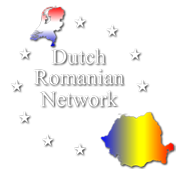Newsletter July 2021

DRN NEWS
DRN and NRCC to explore strategic partnership
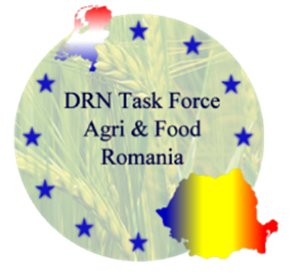 On Monday 12 July, the board members of both similar organizations decided in principle to work together with the aim of offering their members a better service. The entrepreneur is therefore central and was therefore chosen for a
On Monday 12 July, the board members of both similar organizations decided in principle to work together with the aim of offering their members a better service. The entrepreneur is therefore central and was therefore chosen for a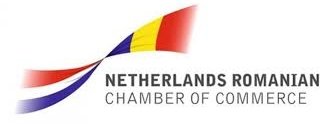 pragmatic approach. A pilot project was therefore chosen in the agricultural sector, which both in Romania and in the Netherlands have their own dynamics, but also have a lot to offer each other. Both organizations have a Task Force and these will contact each other within a reasonable period of time and, if possible, draw up an action plan, in which the service to their members is central. In short, putting the action to the word. By the way, we recommend that you take note of the recent NRCC White Paper 2021 via the link: https://www.nrcc.ro/uploads/advocacy/63496NRCC-WhitePaper%20A4-Web.pdf
pragmatic approach. A pilot project was therefore chosen in the agricultural sector, which both in Romania and in the Netherlands have their own dynamics, but also have a lot to offer each other. Both organizations have a Task Force and these will contact each other within a reasonable period of time and, if possible, draw up an action plan, in which the service to their members is central. In short, putting the action to the word. By the way, we recommend that you take note of the recent NRCC White Paper 2021 via the link: https://www.nrcc.ro/uploads/advocacy/63496NRCC-WhitePaper%20A4-Web.pdf
Romanian Consular Corps alerts Dutch companies to Romanian employees
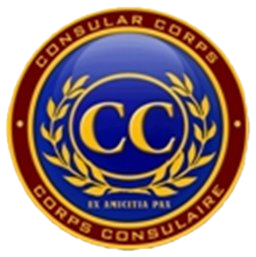 The Dutch honorary consuls who represent Romania in the Netherlands – under the auspices of the Romanian embassy – draw the attention of their trilingual website www.consulate-romania.nl the existence of an extensive (Romanian-language) brochure in which the rights and obligations of Romanian citizens are described in detail if they reside in the Netherlands. In addition, it is described in three languages how they can digitally submit their questions to the consular department of the embassy in certain unforeseen situations. Downloading the brochure and handing it over to the Romanian employee can save a lot of time and misunderstandings.
The Dutch honorary consuls who represent Romania in the Netherlands – under the auspices of the Romanian embassy – draw the attention of their trilingual website www.consulate-romania.nl the existence of an extensive (Romanian-language) brochure in which the rights and obligations of Romanian citizens are described in detail if they reside in the Netherlands. In addition, it is described in three languages how they can digitally submit their questions to the consular department of the embassy in certain unforeseen situations. Downloading the brochure and handing it over to the Romanian employee can save a lot of time and misunderstandings.
Perhaps unnecessarily: Romanian newcomers are referred to the extensive Romanian-language guide “Well in Olanda”.
To consult this guide click here.
Logistics Sector
Neele-Vat Logistics acquires Steder Group
Logistics service provider Neele-Vat Logistics has reached an agreement on the acquisition of the Steder Group. With this acquisition, Neele-Vat is strengthening its position as a sea freight forwarder in the port of Rotterdam. In addition, international offices will be added in Glasgow, Aberdeen, Houston and Dubai .
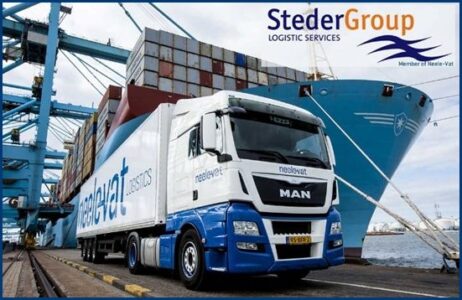 Both companies are members of the DRN and have been active in Romania (Oradea and Constanta) for many years.
Both companies are members of the DRN and have been active in Romania (Oradea and Constanta) for many years.
The merger of these two Rotterdam companies means further international growth for Neele-Vat. With the addition of 50 employees in Scotland, there are now more than 100 employees working in the UK. This strengthens the scale needed to remain competitive in the Europe of tomorrow.
Steder Group, with 100 employees, will continue to operate under its own name within the Neele-Vat group for the time being. Management will remain in place and the acquisition will not affect employment.
Rinus Spijkers, CEO of Steder Group: “The acquisition by Neele-Vat offers a nice continuation for customers and staff of the Steder Group. With the same customer-oriented, no-nonsense culture, and even more clout. I am very happy that I can offer my customers and colleagues such a bright future.” Steder Agencies & Chartering will remain independent and will not be sold.
Rene Bongers, commercial director of Neele-Vat: “The activities of Neele-Vat and Steder Group complement each other well. We can now offer our customers an even broader service. And with the new locations, we are in a good starting position to expand our services internationally. So that we can fulfill our ambitions to grow as a family business and remain competitive.”
After the takeover, Neele-Vat Logistics will remain a true Rotterdam family business with 1,000 employees, 27 branches in 10 countries, 255,000 m² warehouse and a turnover of 395 million euros.
Romanian freight forwarders revolt against tax authorities ANAF.
On Friday, June 18, they drove at low speed on the main arteries of the country. This form of protest is directed against what they call the “harassment” of the tax authorities.
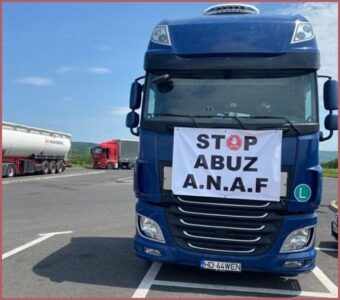 “After years of standing alone and bearing the economic hardship amid the pandemic, the transportation industry is being harassed by the tax authorities, who have decided to reclassify drivers’ per diems as wage income and tax them with income tax. In some cases, these are carried out over the past five years, so that the value of the resulting tax decisions is several million euros for companies with fleets of around 100 trucks.In other words, we are talking about huge amounts, most of which are the sanctioned companies do not have the money to pay,” according to a communiqué from the employers’ organizations in the sector.
“After years of standing alone and bearing the economic hardship amid the pandemic, the transportation industry is being harassed by the tax authorities, who have decided to reclassify drivers’ per diems as wage income and tax them with income tax. In some cases, these are carried out over the past five years, so that the value of the resulting tax decisions is several million euros for companies with fleets of around 100 trucks.In other words, we are talking about huge amounts, most of which are the sanctioned companies do not have the money to pay,” according to a communiqué from the employers’ organizations in the sector.
Freight operators are also concerned about the intention of the current Minister of Transport, Cătălin Drulă, to introduce the vignette per kilometer, according to the “polluter pays” principle, which has been promoted intensively by the European Commission for years. It is not being put into practice because it would exponentially increase road tolls for carriers in every European country, the statement said. According to the carriers, these increases would be reflected in the prices of the products on the shelf. 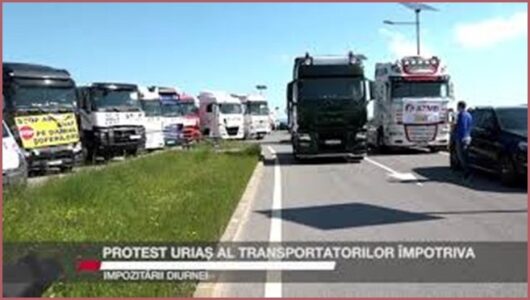 “While other Eastern European states are looking for solutions to maintain the competitiveness of their transport companies in the Community market, competitiveness is reduced due to protectionist regulations imposed by Western Europeans through the mobility package, which will come into effect in February 2022.
“While other Eastern European states are looking for solutions to maintain the competitiveness of their transport companies in the Community market, competitiveness is reduced due to protectionist regulations imposed by Western Europeans through the mobility package, which will come into effect in February 2022.
The international transport companies are contributing massively to the reduction of Romania’s trade deficit, which amounted to more than 16 billion euros in 2020, directly and indirectly employing almost 400,000 people in this economic segment. They must be consulted before the introduction of new regulations aimed at their activity, as befits an economic sector that contributes more than 7% to Romania’s GDP “, according to the communiqué of the organizations APTE2002, Apulum Alba Iulia, ATM Bucovina, ARTRI, COTAR, FORT and UNTRR
KLG Europe Romania: Simplify, the business ecosystem for online stores
Simplify, launched last year by KLG Europe Romania, has developed rapidly. In March 2021, the company grew by 115 percent year-on-year, accounting for 10% of KLG Europe Romania’s revenue. Simplify experienced an upward trend after the first six months, with a 300 percent increase in business volumes and processing more than 25,000 orders per month for online stores in the home & decoration, toys and fashion markets. Simplify offers entrepreneurs a solution based on the integration of technology and operational flows to automate the internal processes of an online store.
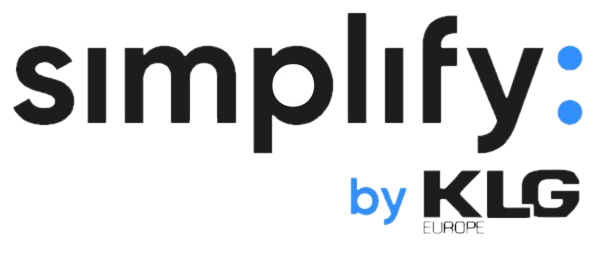 “The expansion of our customer portfolio, as well as the growth generated by the development of Simplify’s customer business, was the result of responding to the current needs of e-commerce consumers. With Simplify, we take over the entire logistics business, giving customers the time they need to focus on actions that lead to business scaling, profit growth, and development of marketing and communication strategies, such as site optimization and delivery, increasing the number of images for each product, expanding the range of items and adding new product categories,” said Cosmin Căpățâneanu, Digital Transformation Director. Online businesses benefit from integrated services for the entire supply chain through the Simplify ecosystem, including every type of transportation for delivery, product receipt, storage, packaging and labeling, as well as access to the receipt of products returned by customers.
“The expansion of our customer portfolio, as well as the growth generated by the development of Simplify’s customer business, was the result of responding to the current needs of e-commerce consumers. With Simplify, we take over the entire logistics business, giving customers the time they need to focus on actions that lead to business scaling, profit growth, and development of marketing and communication strategies, such as site optimization and delivery, increasing the number of images for each product, expanding the range of items and adding new product categories,” said Cosmin Căpățâneanu, Digital Transformation Director. Online businesses benefit from integrated services for the entire supply chain through the Simplify ecosystem, including every type of transportation for delivery, product receipt, storage, packaging and labeling, as well as access to the receipt of products returned by customers.
According to the latest eMAG Marketplace research, partner Simplify, there are still significant growth opportunities for digital transactions: the Romanian Association of Online Shops (ARMO) estimated a 30% increase in 2020, an estimated value of 6 billion euros for online retail, with online transactions account for about 10% of all retail sales. In terms of products ordered, demand for laptops has almost doubled since April 2020 and Romanians have ordered three times more vacuum cleaners and five times more tablets than the year before. In recent months, the interest in mobile phones has increased by more than 35%. Currently, there is a high demand for furniture and decorations, as well as a significant increase in the fashion segment.
”The evolution of the Romanian e-commerce market has also contributed to the development of our business priorities. They focused on digitization, which allowed the Simplify customer to quickly access information, both business information and software infrastructure that enables the integration of the many applications that e-commerce companies often use, such as online trading platforms, marketplace platforms or courier applications.
The most recent investments have been made in the IT sector, for the apps that support the ecosystem: the Warehouse Management System (WMS) application and the Simplify portal, and we will continue to invest in these applications and, gradually, in the automation sector to streamline processes. By the end of the year we will have exceeded the initial investment of EUR 1.5 million in the first year of operation, and in five years we will have reached EUR 5 million, all of which will come from KLG Europe funds. ” added Cosmin Căpățâneanu, director of digital transformation.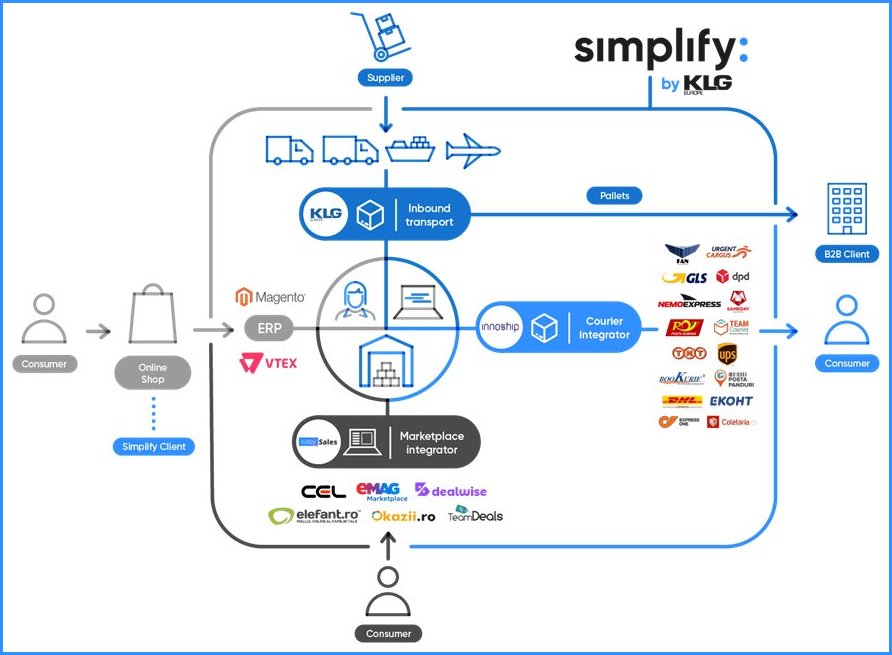
One of the main benefits for customers is the Simplify portal, which allows you to view real-time information such as the status of all delivery transport (whether by road, sea or air) or the status of orders placed by customers. will reach those who ordered online. You can also view the status of stocks and packages to be delivered via this portal. In addition, information such as data analysis, return logistics, document management and more is easily accessible thanks to process automation via API or direct ERP software integration with the Simplify ecosystem. In other words, just as the end user benefits from the AWB Tracking system for monitoring a package they receive, Simplify customers have easy access to all information in the supply chain.
European Green Deal versus Mobility Package?
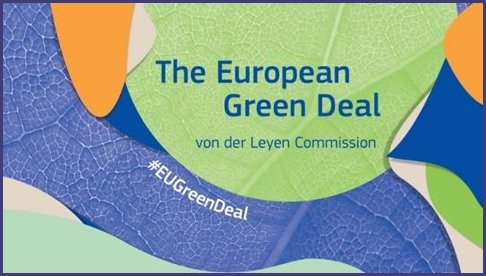 When you hear EU Commissioner Frans Timmermans speak in his usual compelling tone about the fact that decarbonisation requires huge investments, this obviousness arouses resistance.
When you hear EU Commissioner Frans Timmermans speak in his usual compelling tone about the fact that decarbonisation requires huge investments, this obviousness arouses resistance. 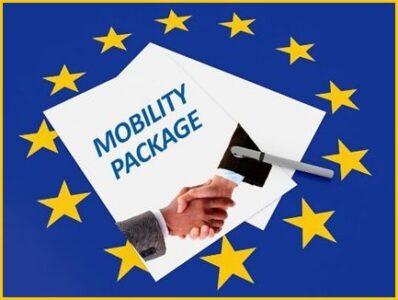 It has already resulted in a barrage of critical questions from at least six other supervisory directors. It is also highly doubtful whether the EU’s Transport Commissioner, the Romanian Adina Valean, will take over, as she has already had her hands full with the European Commission’s controversial mobility package, which is a collection of three initiatives in the field of governance. of commercial road transport in the European Union. It is the largest amendment to EU road transport rules, which covers many aspects of the industry’s activities.
It has already resulted in a barrage of critical questions from at least six other supervisory directors. It is also highly doubtful whether the EU’s Transport Commissioner, the Romanian Adina Valean, will take over, as she has already had her hands full with the European Commission’s controversial mobility package, which is a collection of three initiatives in the field of governance. of commercial road transport in the European Union. It is the largest amendment to EU road transport rules, which covers many aspects of the industry’s activities.
The plan to make road transport and the built environment pay for their CO₂ emissions from now on is also particularly sensitive. This means that the average citizen is saddled with higher prices at the pump and for heating his home.
Romania goes for compressed natural gas for road transport
To achieve the decarbonisation goal of the European Green Pact for Europe of carbon neutrality, huge investments are needed, including in road transport. Transport is responsible for about a quarter of CO2 emissions and electric motors are not yet a viable solution for long-distance road transport. Vehicles that run on compressed natural gas or liquefied natural gas (CNG/LNG) are therefore the best option, according to road hauliers.
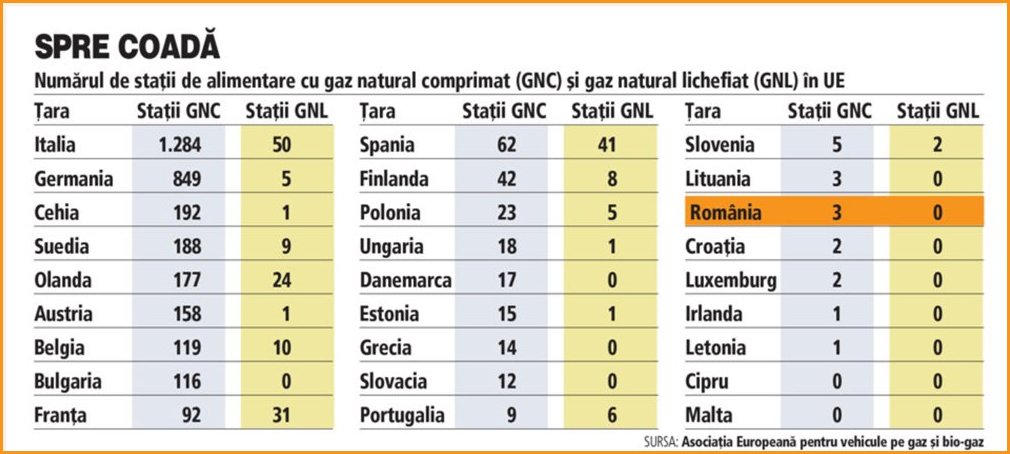
However, Romania has only 3 compressed natural gas supply stations and is at the bottom of the European ranking in this regard, according to data from the European Association for Gas and Bio-gas Vehicles. By comparison, Bulgaria has 116 charging stations for compressed natural gas, Germany 850 and Italy almost 1,300.
To help achieve the goals of the Green Deal, the road transport sector must reduce its carbon footprint by 90% by 2050.
Romanian carriers believe that gas is currently a viable solution, as Romania has the second largest natural gas reserve in the European Union, but also because electric vehicles are currently not a good economic solution for long-distance transport.

Germany has a developed network of CNG filling stations of 850 units. The German state also grants carriers a subsidy for the purchase of compressed natural gas vehicles up to 40% of the purchase value.
Compressed natural gas is not only less polluting, but also has a higher economic return. For example, at 100 km, the costs for natural gas vehicles are 35% lower than those with diesel engines and 52% lower than those with petrol engines, according to data from the European Association of Gas Vehicles and Bio-gas.
However, Romania currently does not have the necessary infrastructure for gas-powered vehicles. With only 3 gas stations for compressed natural gas, it is one of the last places in the European Union.
Transport is one of the largest participants in Romanian service exports. Data from the National Bank of Romania shows that transport services recorded a trade surplus of more than 1 billion euros in the first three months of 2021. Exports of such services amounted to 1.8 billion euros, while imports amounted to 750 million euros.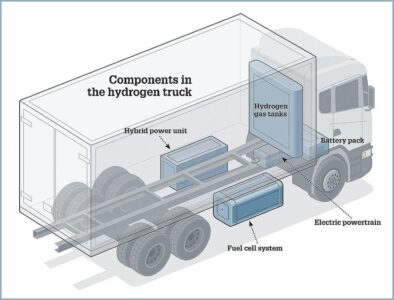
The Covid-19 crisis caused the turnover of Romanian road hauliers to drop by 13% in 2020, compared to 2019, and the activities of international road hauliers in Romania fell by 17%. At the same time, the domestic road passenger transport market decreased by 20% and sales of international passenger transport decreased by 55% in 2020 compared to 2019.
Hydrogen is not yet an alternative .
Scania has so far invested heavily in hydrogen technology and even heavy hydrogen vehicles are already on the road at customers. However, in a striking press release, the company now writes that these tests have given the company the insight that hydrogen is not so obvious as a sustainable fuel for long-distance road transport. “The use of hydrogen for such applications will be limited for the time being, as three times as much renewable electricity is needed to power a hydrogen truck compared to a battery-electric truck. A lot of energy is lost during production and distribution and the conversion into electricity. In short, the Romanian choice seems to be the best alternative for the time being from an economic point of view.
Shipbuilding and Installation Sector
Diamonds, Damen and Alewijnse
Damen and Alewijnse deliver the newest and largest offshore diamond mining vessel for the coming summer period. Alewijnse has reached a milestone in the electrical installation on board the newest and largest offshore diamond mining vessel in the world (AMV3). By switching on the shore power, Alewijnse gives the go-ahead for the commissioning phase of the complete electrical installation on board the new ship for De Beers Marine Namibia (Pty) Ltd. Alewijnse is once again collaborating with Damen Shipyards Group on this project, this time at the Romanian yard Damen Shipyard Mangalia, the flagship of the Damen Group yards for the construction of mainly large and complex ships and offshore structures.
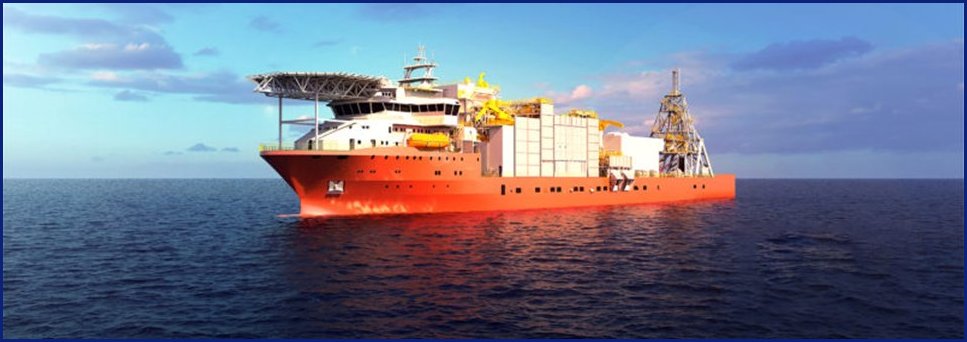
The Additional Mining Vessel (AMV) 3 is an exceptionally complex vessel. The construction involves companies from both the mining and maritime industries. It is the seventh ship in the fleet of owner De Beers Marine Namibia (Pty) Ltd. and will be the most advanced ship of its type ever built.
The new vessel will be deployed for diamond mining off the coast of Namibia from 2022. This will significantly increase the annual production level of the shipping company, expected to reach 35%. Delivery of the ship is planned for the summer of 2021.
Van der Leun awarded the Royal predicate
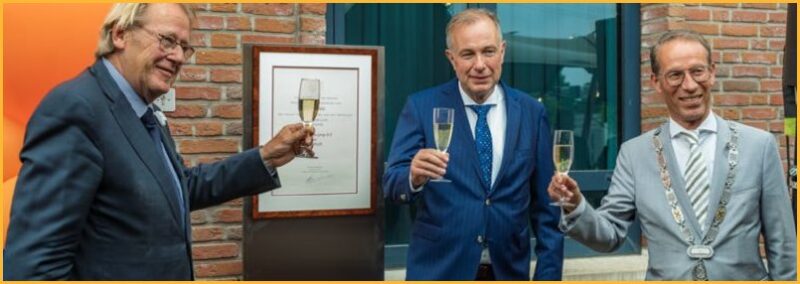 Royal Van der Leun is an all-round system integrator that operates worldwide. Van der Leun engineers and installs innovative, integrated electrical system solutions for the maritime industry, construction, dredging and offshore.
Royal Van der Leun is an all-round system integrator that operates worldwide. Van der Leun engineers and installs innovative, integrated electrical system solutions for the maritime industry, construction, dredging and offshore.
Thanks to efficient use of materials, thoughtful installation and a strong service network, customers anywhere in the world can rely on our systems blindly. 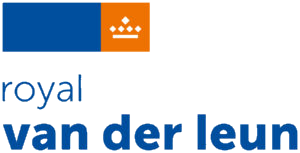 In Romania they are located in the city of Galati, because Damen Shipyards is also one of their customers.
In Romania they are located in the city of Galati, because Damen Shipyards is also one of their customers.
During the ceremony, in the presence of the King’s Commissioner Jaap Smit and the mayor of Sliedrecht Jan de Vries, CEO Martin den Breejen unveiled the new logo. The Dutch Romanian Network wishes the more than 100-year-old family business a royal future.
Sector Infrastructure
Is the Memorandum of Understanding(2011) between Rotterdam and Constanta still up to date?
The figures of the Port of Constanta speak for themselves. They won’t make it without a strategic partnership.
Seaport traffic decreased in first quarter Seaport traffic decreased by 3.1% in the first three months of the current year compared to the first 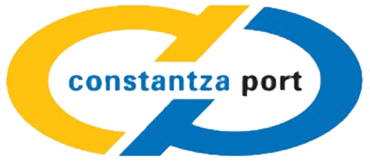 quarter of 2020, in which the volume of unloaded goods increased by 0.5%, while the volume of loaded goods decreased by 6.3%, according to data from the National Institute of Statistics.
quarter of 2020, in which the volume of unloaded goods increased by 0.5%, while the volume of loaded goods decreased by 6.3%, according to data from the National Institute of Statistics.
The 3.1% decrease in the total volume is caused by the decreases registered by domestic transport by 21.4% and by transit traffic by 14.4%; international inland shipping increased by 22.0%,
The goods loaded and unloaded in the ports where seagoing vessels are operated totaled 11.79 million tons and container traffic amounted to 153,000 TEU (equivalent to twenty feet) in the first quarter of 2021. In the same period 7.253 million tons of goods and 80 TEU and 3.65 billion tonne-kilometre (respectively tonne-kilometre: unit of measure for the transport of one tonne of goods on a ship at a distance of one kilometer) and 67,000 TEU – kilometer. In the first quarter of 2021, compared to the first quarter of 2020, activity in ports that allow the operation of seagoing vessels decreased for most ports. The ports where the most goods were registered during the period under review are: Constanța, with a total share of 94.7%, and Galați, with 4.0%.
In the first quarter of 2021, the type of solid bulk cargo was mainly transported, with a share of 57.3% of the total goods loaded and unloaded.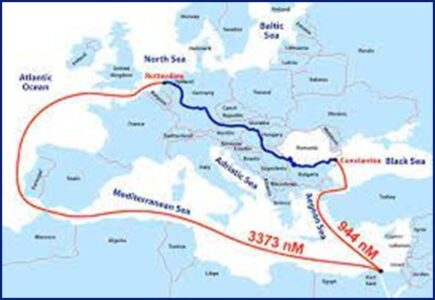 The same type of cargo was dominated by freight loads (74.2%), for the discharges the largest share was registered by the type of liquid bulk cargo (41.6%). In the first quarter of 2021, the largest quantities of goods loaded and unloaded were recorded with regard to the following partners: Russia (2,586 million tons) and Turkey (2 million tons). Of the Member States of the European Union, the largest quantities of goods transported were registered in partnership with Spain (643,000 tons) and Greece (389,000 tons).
The same type of cargo was dominated by freight loads (74.2%), for the discharges the largest share was registered by the type of liquid bulk cargo (41.6%). In the first quarter of 2021, the largest quantities of goods loaded and unloaded were recorded with regard to the following partners: Russia (2,586 million tons) and Turkey (2 million tons). Of the Member States of the European Union, the largest quantities of goods transported were registered in partnership with Spain (643,000 tons) and Greece (389,000 tons).
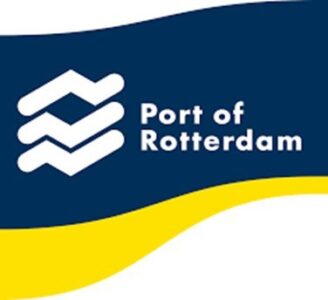
At the level of the first quarter of 2021, larger volumes of the type of goods were loaded – according to the NST 2007 classification: agricultural, hunting and forestry products; fish and other fishery products – 64.3%. In terms of unloaded goods, the largest share of the type of goods was coal and lignite, crude oil and natural gas – at 39.8%. In the port of Constanța, the main quantities of goods loaded in the first quarter of 2021 were of the solid bulk cargo type (75.3%), before unloading the predominant type of liquid bulk cargo – in proportion of 43.6%. With regard to the type of goods NST 2007, mainly agricultural products, hunting and forestry products were loaded in the port of Constanța; fish and other fishery products – in proportion of 65.6%, for the unloaded goods the share of coal and lignite, crude oil and natural gas (41.0%).
In the European context, the statistical data published by the European Commission – Eurostat – presents at the level of the first quarter of 2020, Romania ranks fifteenth in the total volume of goods loaded and unloaded in the main ports, among the 22 Member States of the European Union. , reports data on seaport traffic. According to data, in the first quarter of last year, of the total volume of cargo loaded and unloaded in the main European ports, four Member States, namely the Netherlands, Spain, Italy and Belgium, accounted for 53.3% of the total volume of loading and unloading seaport transport.
ING and NN introduce (Romanian)Health Protect Insurance
ING Bank recently announced that it has launched ING Health Protect insurance in partnership with NN Romania, a product available both in the ING Office network and in the Home’Bank banking application.
ING Health Protect covers the risk of surgery due to an accident or illness and offers 24/7 telephone support. This service is provided by specialized doctors who can determine the health status of the insured based on the telephone information, assess the urgency and provide medical advice and/or guidance to medical services when they need it, the bank said in a statement. statement.
 “The past year has shown us how fragile health can be and how important it is to be able to rely on a safety net. ING Health Protect offers a solution for financial security for serious health problems, which can completely disrupt a family. As usual touched on our customers, we bring another relevant product to the ING Home’Bank application, especially in the current context, available anytime, anywhere “, underlined Roxana Petria (photo), Tribe Lead Customer Engagement, ING Bank Romania.
“The past year has shown us how fragile health can be and how important it is to be able to rely on a safety net. ING Health Protect offers a solution for financial security for serious health problems, which can completely disrupt a family. As usual touched on our customers, we bring another relevant product to the ING Home’Bank application, especially in the current context, available anytime, anywhere “, underlined Roxana Petria (photo), Tribe Lead Customer Engagement, ING Bank Romania.
“Our mission is to help as many Romanians as possible to take care of their health and especially to minimize their financial worries in case of medical problems. By launching this health insurance especially for ING customers, we are targeting an additional segment of customers and together we are contributing to reducing the financial protection gap in Romania,” added Cătălin Elisei, General Manager of NN Asigurări SA.
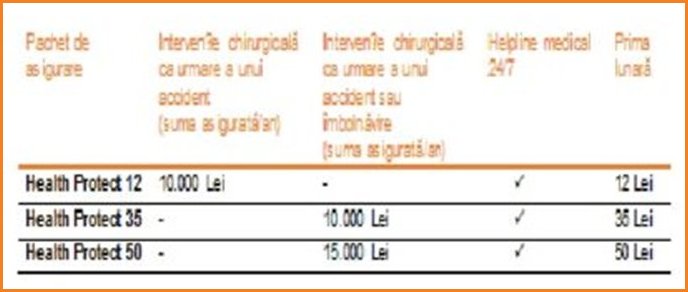 Customers have three packages to choose from – Health Protect 12, 35 and 50, with a monthly cost of between 12 and 50 lei/month and a maximum insured amount of 15,000 lei per year. The conditions for accessing ING Health Protect are the holding or opening of a current account with ING Bank and the age between 18 and 59 years. Health Protect 35 and 50 require additional health regulations.
Customers have three packages to choose from – Health Protect 12, 35 and 50, with a monthly cost of between 12 and 50 lei/month and a maximum insured amount of 15,000 lei per year. The conditions for accessing ING Health Protect are the holding or opening of a current account with ING Bank and the age between 18 and 59 years. Health Protect 35 and 50 require additional health regulations.
The insurance is taken out on the basis of a statement from the client in which general information about his health is given, without the need for medical documents. All documents required to take out the insurance are digitally signed, directly in ING Home’Bank. Payment for the first month is made automatically each month, directly from the ING current account, on the 3rd of each month or the following business day.
NN Group, owner of NN Pensii in Romania, negotiates the purchase of part of MetLife’s European life insurance assets
 The largest Dutch insurance company, NN Group, which administers Romania’s main pension fund in Romania, from Pillar II, NN Pensii, with 2 million contributors, is in talks to acquire some of the life insurer’s European assets American Metlife insurance company MetLife for about $740 million. According to Bloomberg, an agreement could soon be reached for units in Greece and Poland,
The largest Dutch insurance company, NN Group, which administers Romania’s main pension fund in Romania, from Pillar II, NN Pensii, with 2 million contributors, is in talks to acquire some of the life insurer’s European assets American Metlife insurance company MetLife for about $740 million. According to Bloomberg, an agreement could soon be reached for units in Greece and Poland,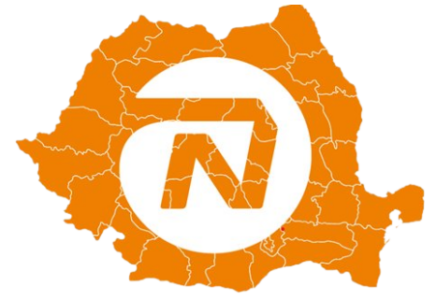 but no final decision as other bidders may appear. Representatives from MetLife and NN Group declined to comment. Two years ago, Italian insurance group Assicurazioni Generali SpA negotiated the purchase of most of its European assets from US rival MetLife, but the negotiations were blocked due to price differences. New York-based MetLife is selling its assets to streamline its global operations. The Europe, Middle East and Africa operations reported an adjusted profit of $327 million in 2020, up from $282 million in 2019.
but no final decision as other bidders may appear. Representatives from MetLife and NN Group declined to comment. Two years ago, Italian insurance group Assicurazioni Generali SpA negotiated the purchase of most of its European assets from US rival MetLife, but the negotiations were blocked due to price differences. New York-based MetLife is selling its assets to streamline its global operations. The Europe, Middle East and Africa operations reported an adjusted profit of $327 million in 2020, up from $282 million in 2019.
IT&C Sector
Situation in Romanian IT&C Sector
In Romania, IT&C specialists are the highest paid employees. According to the National Institute of Statistics (INS), the average net salary in information and communication technology in May 2021 was 6699 lei.
Among the specialists in this sector, the highest net salaries were received by those in the field of information technology services and information services: on average 8192 lei.
In comparison, the average net wage in the total national economy was 3492 lei in May 2021. The lowest net wages are received by employees in hotels and restaurants (HoReCa): 1,850 lei, average in May, according to INS.
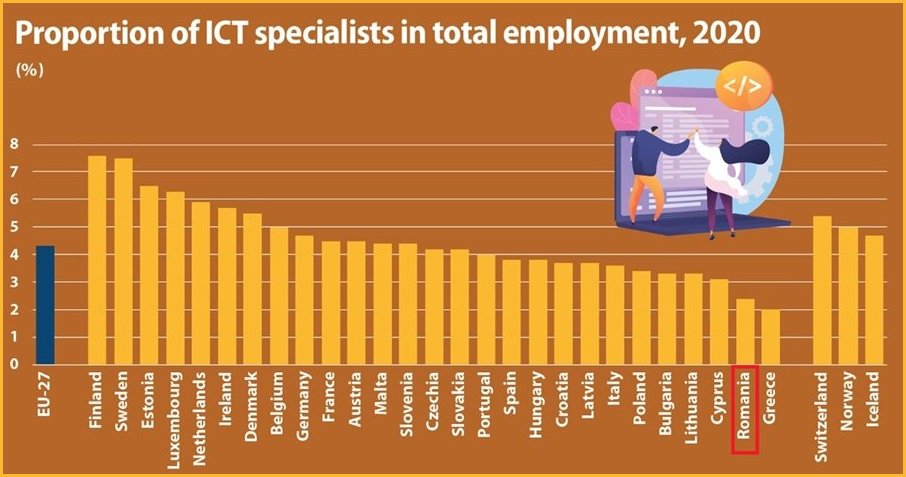
In 2020, the IT&C sector contributed 6.8% to the formation of Romania’s gross domestic product and an increase of 0.6% to economic growth. Together with construction, IT&C was the engine of the Romanian economy and softened the economic downturn of the country. In 2020, Romania had a 3.9% decline in GDP compared to last year as a whole.
Constructions contributed 6.6% to the formation of Romania’s gross domestic product.
The largest contribution to GDP shaping was made by industry at 19.7%, but this sector experienced a 2% decline in 2020 compared to 2019, contributing to the economic downturn in 2020.
Romania is at the bottom of the European Union’s ranking for the share of information and communication technology (IT&C) specialists in the country’s total workforce, according to the latest available data, published Friday by the European Statistical Office, Eurostat .
In 2020, IT&C specialists made up only 2.4% of the total working population in Romania, our country ranks penultimate among the 27 EU Member States in this regard.
Only Greece had a lower share of IT professionals: 2%. At the Bulgarian neighbours, the share of IT&C specialists in the total workforce was 3.2% and in Hungary almost 4%.
Agri sector
Romanian farmers are gradually learning the lesson of “association”
In Romania, when talking with the older generation of farmers about the often smaller unprofitable plots (which is a substantial number) about cooperation on a cooperative basis, for example, every conversation stalls and mistrust arises. Rational arguments in favor of cooperation are brushed aside. It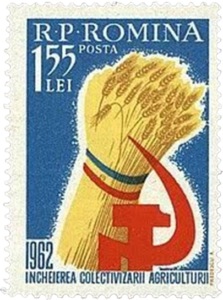 still has a negative influence on the functioning of a good land registry and land consolidation appears to be unmentionable in many cases. That is why it is wise to stand next to the farmers and not against them.
still has a negative influence on the functioning of a good land registry and land consolidation appears to be unmentionable in many cases. That is why it is wise to stand next to the farmers and not against them.
For a small part of recent history teaches us that the dictator Ceaușescu’s “systematization” of the countryside was, in short, a village demolition, and independent peasants were forced to work in state farms (Kolkhoz, after Stalin’s model) and many rightly so. arrived in concrete blocks with no facilities in the cities. So using the word cooperative sounded like swearing in church. That is why nowadays people prefer to use the word association. 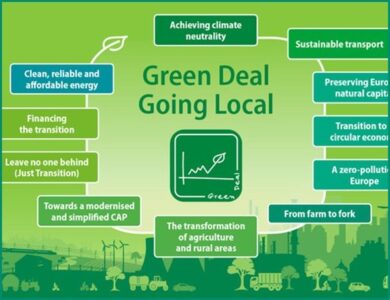 However, now thirty years later and times and circumstances are changing. The current generation of farmers are driven by big traders who impose strict rules, demand large quantities of goods and leave little room for maneuver for small producers, but also attracted by European money earmarked for cooperatives, Romanian farmers are starting to do business again through “cooperative” associations . Last year alone, a totally atypical year for any company, 166 agricultural cooperatives were established to 1,621, double the number of 2014, for example, according to information from the ONRC (trade registry). Today, the first five largest agricultural cooperatives in Romania together have crossed the half-billion lei threshold for the first time in 2020, following a slight increase from the previous year. Crasna Agricultural Cooperative, Banat Agro Vest Agricultural Cooperative and Argeș Biosud Agricultural Cooperative
However, now thirty years later and times and circumstances are changing. The current generation of farmers are driven by big traders who impose strict rules, demand large quantities of goods and leave little room for maneuver for small producers, but also attracted by European money earmarked for cooperatives, Romanian farmers are starting to do business again through “cooperative” associations . Last year alone, a totally atypical year for any company, 166 agricultural cooperatives were established to 1,621, double the number of 2014, for example, according to information from the ONRC (trade registry). Today, the first five largest agricultural cooperatives in Romania together have crossed the half-billion lei threshold for the first time in 2020, following a slight increase from the previous year. Crasna Agricultural Cooperative, Banat Agro Vest Agricultural Cooperative and Argeș Biosud Agricultural Cooperative
For those who want to learn more about the recent history of the Romanian agri sector, we refer to the article by the late ambassador Coen Stork: https://www.donaustroom.eu/hoe-de-harten-uit-roemeense-steden-zijn-gerukt/
Carbon credits and regenerative agriculture
These are two activities that are still in the pioneering phase, but if we interpret the recent signals correctly, these processes could be accelerated. Certainly because an increasing interest has been observed in both the Netherlands and Romania.
A concise definition seems desirable to us.
Carbon credit
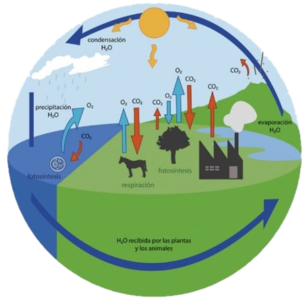 The Collins English Dictionary defines a carbon credit as “a certificate showing that a government or company has paid to remove a specified amount of carbon dioxide from the environment”. The Environment Protection Authority of Victoria defines a carbon credit as a “general term to assign a value to a reduction or offsetting of greenhouse gas emissions…usually equal to one tonne of carbon dioxide equivalent (CO2-e). ”
The Collins English Dictionary defines a carbon credit as “a certificate showing that a government or company has paid to remove a specified amount of carbon dioxide from the environment”. The Environment Protection Authority of Victoria defines a carbon credit as a “general term to assign a value to a reduction or offsetting of greenhouse gas emissions…usually equal to one tonne of carbon dioxide equivalent (CO2-e). ”
Investopedia Inc’s investment dictionary defines a carbon credit as a “ permit that allows the holder to emit one tonne of carbon dioxide “..That “ can be traded on the international market at their current market price “.
There are two types of credits: Voluntary Emission Reduction (VER): A carbon offset that is exchanged for credits on the over-the-counter or voluntary market. Certified Emission Reduction (CER): Emission units (or credits) created through a regulatory framework with the aim of offsetting a project’s emissions.
Regenerative Agriculture
A workable scientific definition of regenerative agriculture is ‘a form of agriculture in which soil protection is central in order to contribute to various ecosystem services’.
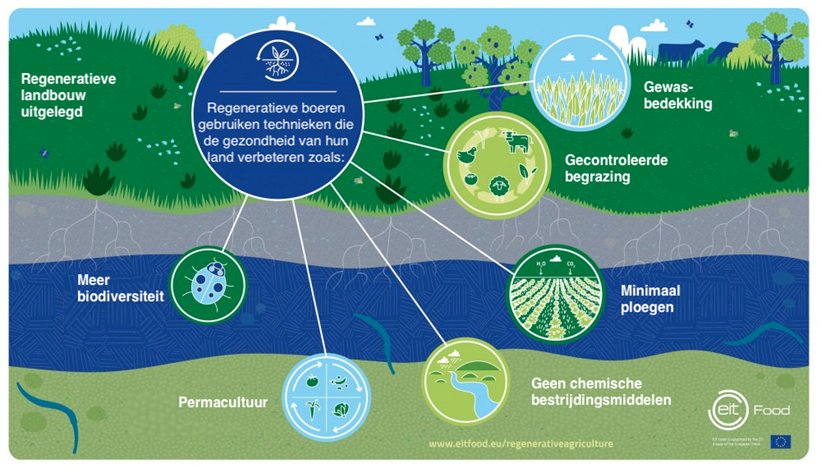
Ecosystem services are services that nature provides us, such as the production of food or the supply of clean water. But this also includes high biodiversity and a green environment. Many of these services are of great importance to us in light of the climate crisis. Think of storing carbon in the soil or regulating water: services that we will need more and more in the coming years. The extent to which nature can provide these services depends on soil quality. If this improves, the land can continue to produce in the long term, while also helping to regulate the climate and support natural cycles.
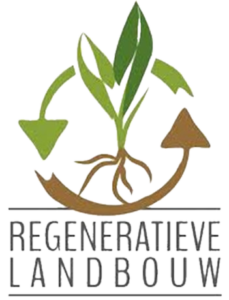 Regenerative agriculture therefore does more than just use residual flows or prevent damage to ecosystems or biodiversity, but recognizes that healthy soil is the starting point of a sustainable agriculture and works actively to improve it. The sustainable delivery of ecosystem services and the active improvement of the soil are central to this definition, so that regenerative agriculture contributes to both the environmental and social and economic goals of agriculture.
Regenerative agriculture therefore does more than just use residual flows or prevent damage to ecosystems or biodiversity, but recognizes that healthy soil is the starting point of a sustainable agriculture and works actively to improve it. The sustainable delivery of ecosystem services and the active improvement of the soil are central to this definition, so that regenerative agriculture contributes to both the environmental and social and economic goals of agriculture.
Current agriculture in the Netherlands is not future-proof. The agricultural sector is now focused on maximum food production, but unfortunately also causes high CO2 emissions, a decrease in biodiversity and loss of residual flows. Problems such as extreme drought have also become increasingly visible in recent years, and will only increase due to the climate crisis.
There are many Romanian and Dutch initiatives on the current activities, but too many to list in this brief description. So we recommend that you consult with a specialist from the DRN Task Force Food & Agri or their Romanian counterpart from the NRCC.
See the link: https://www.dutchromaniannetwork.nl/drn-task-force-agri-food-romania/
7th Romanian product protected under the EU trademark system
At the end of April, the European Commission (EC) approved the registration of the Romanian product “Cascaval de Saveni” (Saveni matured cheese) in the register of products benefiting from a Protected Geographical Indication (PGI). Saveni cheese is a matured cheese produced in the Botosani region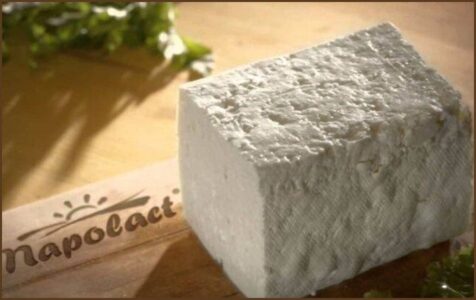 (northeast part of the country). The product is distinguished by its long maturation period (60 days), which allows it to acquire a homogeneous consistency and a more pronounced colour. This new designation joins the 1450 products already protected at European level, the list of which is available in the Names and Registrations Database (DOOR). Romania had previously registered six products on European quality systems, five of which are protected geographical indications (PGI): Topoloveni plum jam, Sibiu salami, Novac smoked fish from Tara Barsei, smoked Danube mackerel and Plescoi sausage. The product Telemea de Ibanesti (white cheese) is registered on the Protected Designation of Origin (PDO) quality system.
(northeast part of the country). The product is distinguished by its long maturation period (60 days), which allows it to acquire a homogeneous consistency and a more pronounced colour. This new designation joins the 1450 products already protected at European level, the list of which is available in the Names and Registrations Database (DOOR). Romania had previously registered six products on European quality systems, five of which are protected geographical indications (PGI): Topoloveni plum jam, Sibiu salami, Novac smoked fish from Tara Barsei, smoked Danube mackerel and Plescoi sausage. The product Telemea de Ibanesti (white cheese) is registered on the Protected Designation of Origin (PDO) quality system.
Mining Sector
Rogue Canadian gold prospectors try to fool Romania again
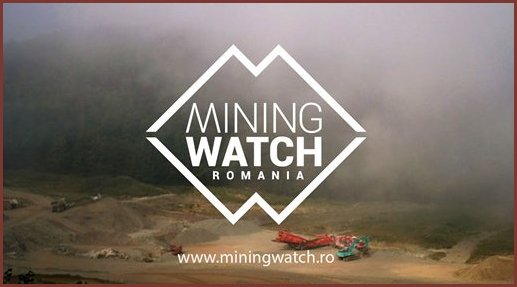 Civil society in Romania is preparing for another Rosia Montana scenario in Rovina. Mining Watch Romania and Save Rosia Montana Campaign condemn the Romanian government for granting the exploitation license for copper and gold at the Rovina deposit. The strategy of turning the Apuseni Mountains into a huge open mining project, missiles with the title awarded to Carpathian Gold. The Ponta government is paving the way for new mining projects with devastating environmental consequences, ignoring the tens of thousands of people who took to the streets in the fall of 2013 against cyanide mining in Rosia Montana. According to the former director of the Geological Institute of Romania, Ştefan
Civil society in Romania is preparing for another Rosia Montana scenario in Rovina. Mining Watch Romania and Save Rosia Montana Campaign condemn the Romanian government for granting the exploitation license for copper and gold at the Rovina deposit. The strategy of turning the Apuseni Mountains into a huge open mining project, missiles with the title awarded to Carpathian Gold. The Ponta government is paving the way for new mining projects with devastating environmental consequences, ignoring the tens of thousands of people who took to the streets in the fall of 2013 against cyanide mining in Rosia Montana. According to the former director of the Geological Institute of Romania, Ştefan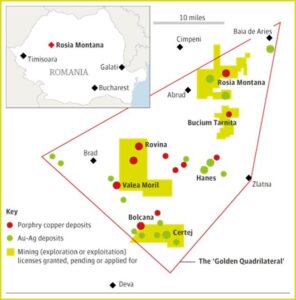 Marincea, the development of projects in the area would entail “generating no less than 2,900 hectares of mining waste”. “We have followed the Rovina project and
Marincea, the development of projects in the area would entail “generating no less than 2,900 hectares of mining waste”. “We have followed the Rovina project and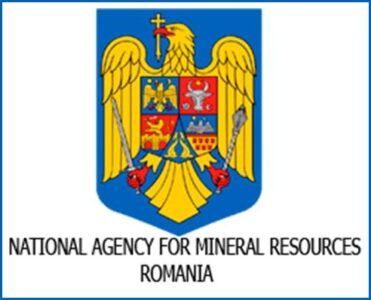 any plans to develop it will be closely monitored. Investors should be aware that the Rovina project would undergo the same examination as the Certej and Rosia Montana projects. Romanians are not willing to allow corrupt governments to destroy the Carpathians,” said Roxana Pencea of Mining Watch Romania. This mining project proposes the exploitation of 120 tons of gold and 100,000 tons of copper in huge open quarries. Rovina could thus become the largest mining activity in Romania, the size of the two open mines – respectively 500 and 600 m diameter and depth between 300 and 400 m – larger than even the Rosia Montana project. The whole area is currently covered with farmland, meadows and forests, all project objectives are located in uninhabited areas, but in close proximity to the villages of Rovina and Merisor belonging to the municipalities of Criscior and Bucureşci. In a straight line, Rovina is only 20 kilometers from Rosia Montană and only 7 kilometers from Brad, a town of 13,900 inhabitants. The procedures applied by the National Agency for Mineral Resources (NAMR) to manage and sell mineral deposits are secret, and the contracts under which the Romanian state retrieves the mineral resources are still considered confidential information. The National Agency for Mineral Resources, which issued the titles, is directly subordinate to
any plans to develop it will be closely monitored. Investors should be aware that the Rovina project would undergo the same examination as the Certej and Rosia Montana projects. Romanians are not willing to allow corrupt governments to destroy the Carpathians,” said Roxana Pencea of Mining Watch Romania. This mining project proposes the exploitation of 120 tons of gold and 100,000 tons of copper in huge open quarries. Rovina could thus become the largest mining activity in Romania, the size of the two open mines – respectively 500 and 600 m diameter and depth between 300 and 400 m – larger than even the Rosia Montana project. The whole area is currently covered with farmland, meadows and forests, all project objectives are located in uninhabited areas, but in close proximity to the villages of Rovina and Merisor belonging to the municipalities of Criscior and Bucureşci. In a straight line, Rovina is only 20 kilometers from Rosia Montană and only 7 kilometers from Brad, a town of 13,900 inhabitants. The procedures applied by the National Agency for Mineral Resources (NAMR) to manage and sell mineral deposits are secret, and the contracts under which the Romanian state retrieves the mineral resources are still considered confidential information. The National Agency for Mineral Resources, which issued the titles, is directly subordinate to
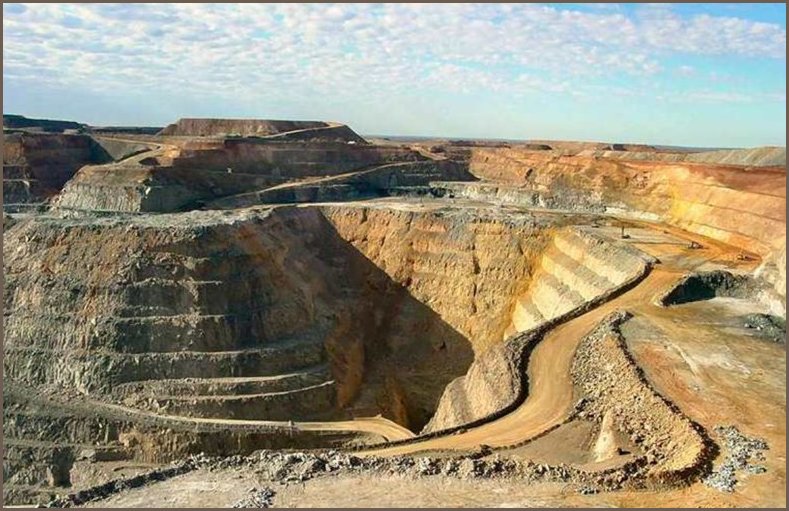
the government, where the chairman of this institution is appointed by a political decision of the prime minister. In this case, NAMR has also awarded the operating title for Rovina to a private operator, in a total lack of transparency. As of the date of this press release, the Agency has not published any information about the new license on its website, nor can it be found on the list of public announcements. NAMR basically behaves like a state within a state, despite the fact that mineral resources are exclusively subject to public ownership under the Constitution. It is extremely serious that the local population is completely ignored in the issuance and granting phase of the mining titles. Most people directly affected by the mining project do not even know the basic information about the project; most of them don’t even understand what an open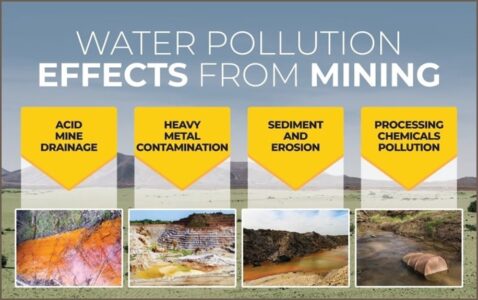 pit of such magnitude. “NAMR should act as the manager and not the owner of the deposits. Leaving aside the suspicions of corruption and the illicit pursuit of personal interests (demonstrated in the cases of Rosia Montana and Certej), a critical question can be raised: If everything is legal and is being undertaken for the public good, why is everything secret? ,” the comment said. Tudor Brădăţan on behalf of the Mining Watch Romania network. Carpathian Gold (CPN:TSX), a Canadian mining junior, plans to open a low-cost open-pit copper and gold mine. The Rovina depot is owned by Carpathian Gold through the company Samax Romania Limited (based in the Virgin Islands), which in turn owns Samax România, a limited liability company (SRL) registered in Baia Mare, Romania. According to a July 2011 company announcement, Barrick Gold (ABX:TSX), the world’s largest mining company, has purchased 9% of the shares of Carpathian Gold for $20 million. In the current context of corruption suspicions, apparent incompetence in defending national interests and total lack of transparency, NAMR’s activity is not fit for a standard value of a European nation. Therefore, the granting of new mining titles comes at a time when decisions are not made by the affected communities and when authorities lack the capacity to critically assess mining proposals. The vigorous and extremely politicized implementation of new mining projects, approved in a non-transparent manner and at the border of legality, at a very fast pace, only suggests the intention of the industry and the government to impose projects with many risk factors, those not adopted by Romanian society.
pit of such magnitude. “NAMR should act as the manager and not the owner of the deposits. Leaving aside the suspicions of corruption and the illicit pursuit of personal interests (demonstrated in the cases of Rosia Montana and Certej), a critical question can be raised: If everything is legal and is being undertaken for the public good, why is everything secret? ,” the comment said. Tudor Brădăţan on behalf of the Mining Watch Romania network. Carpathian Gold (CPN:TSX), a Canadian mining junior, plans to open a low-cost open-pit copper and gold mine. The Rovina depot is owned by Carpathian Gold through the company Samax Romania Limited (based in the Virgin Islands), which in turn owns Samax România, a limited liability company (SRL) registered in Baia Mare, Romania. According to a July 2011 company announcement, Barrick Gold (ABX:TSX), the world’s largest mining company, has purchased 9% of the shares of Carpathian Gold for $20 million. In the current context of corruption suspicions, apparent incompetence in defending national interests and total lack of transparency, NAMR’s activity is not fit for a standard value of a European nation. Therefore, the granting of new mining titles comes at a time when decisions are not made by the affected communities and when authorities lack the capacity to critically assess mining proposals. The vigorous and extremely politicized implementation of new mining projects, approved in a non-transparent manner and at the border of legality, at a very fast pace, only suggests the intention of the industry and the government to impose projects with many risk factors, those not adopted by Romanian society.
For more information:
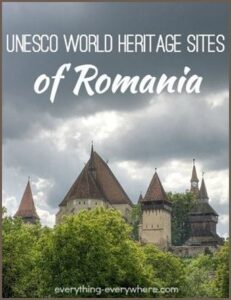 Roxana Pencea, Mobile: 0723024300, Email: contact@miningwatch.ro/mwatch .
Roxana Pencea, Mobile: 0723024300, Email: contact@miningwatch.ro/mwatch .
A DRN board member has conducted his own research – also on site – and has also established that the Canadian gold prospectors, who manifest themselves under a different name each time, but that almost all come from Toronto. Furthermore, Romanian front men are hired through complex constructions. In addition, the open-pit mining is applied that will destroy the Apuseni (mountains) region for about 100 years or more. In addition, cyanide is used for the extraction, which is strictly prohibited in accordance with European legislation.
For more information see: https://miningwatch.ro/en/
Incidentally, Mining Watch is supported by Unesco Romania, Greenpace, Funky Citizens, Friends of Rosia Montana, Declic Community and Evolution who have requested President Klaus Johannis to establish a clear position from the government for the upcoming Unesco Heritage meeting.
Energy sector
Wind Turbines – Investors are unable to install turbines because it is unknown who should be relinquished surfaces
Investors cannot install offshore wind turbines in Romania because it is not yet known exactly which institution should lease land or land in the Black Sea for this type of activity, said Niculae Havrileţ, director and expert at the Ministry of Energy.
“Romania has great potential for offshore wind installations, we are talking about thousands of MW. The World Bank offers us the support to pay for an outside consultancy to have a special law, such as exists in other countries, such as Great Britain , Denmark, Poland,” said the ministerial official.
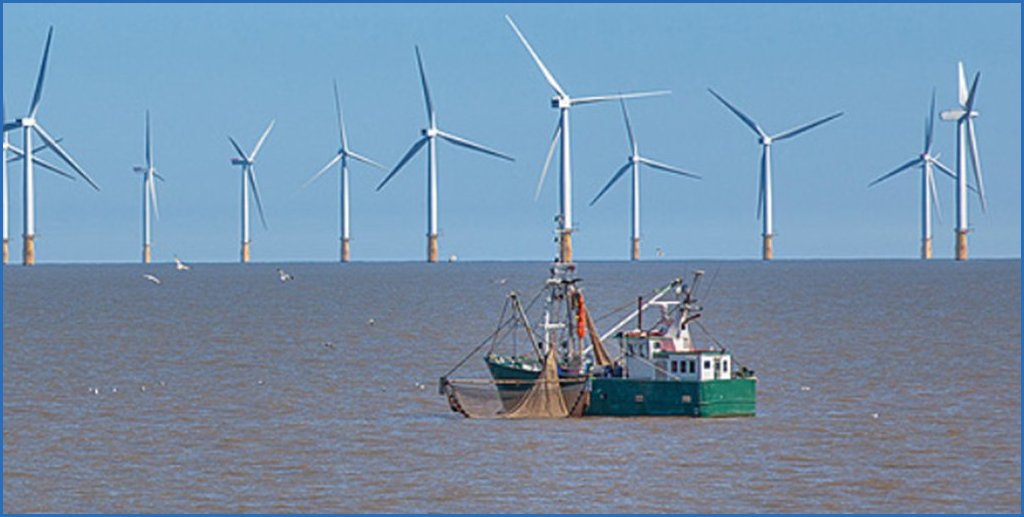
According to him, the secretariat-general of the government is currently analyzing which institution will deal with the concession of maritime areas for this type of activity.
“We believe that we need to know exactly who is leasing the land or the sea surface. In Romania, we have no institution to manage the activity of concession of the seabed for these activities. We do not know, because the General Secretariat of the Government in turn, has entered into an advisory contract to establish how to manage this area under the sea surface. When SGG completes this action, we will probably see, the institution that will manage the area in question will be defined,” Havrileţ explained. points out that investor interest is high, given the wind potential that exists there. But to paraphrase Kafka “The way from the right box to the right wall can sometimes be a long distance.
Financial sector
Banks with Romanian capital outperformed those with foreign capital in the 2020 pandemic year. The proportion of foreigners is decreasing
For the second consecutive year, the share of institutions with Romanian capital has increased in the overall banking landscape. The share of credit institutions with domestic capital rose from 33.2 percent in December 2019 to 38.1 percent in 2020, a repeat of the statistics from 2019 to 2018, according to the latest annual report of the NBR. The share of banks with foreign capital, including subsidiaries of foreign banks in Romania, decreased to 59.9%. Banks with Romanian capital have largely gained market share, only two of the foreign ones have increased.
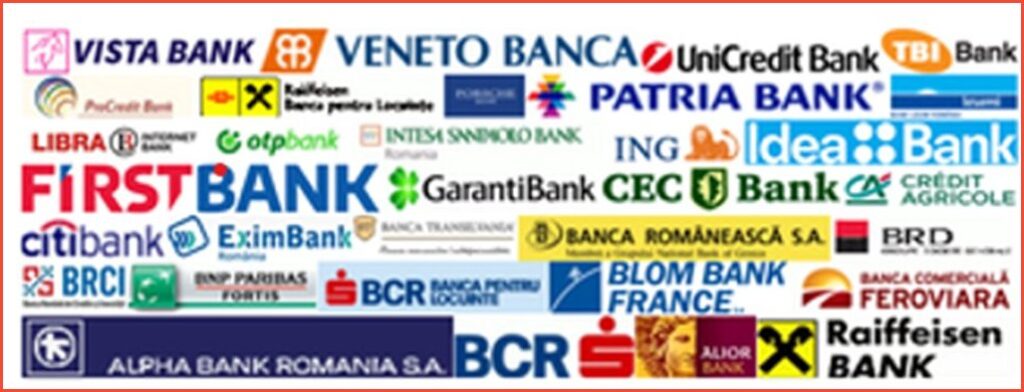
Of the majority domestic banks, the largest gains in market share in terms of assets were recorded by Banca Transilvania, CEC Bank and Eximbank, which also made it into the ranking of systemic banks. It is worth noting that Banca Românească also recorded an increase in market share, as the merger with Eximbank has not yet been completed.
 The share of credit institutions with predominantly foreign capital in the total capital of the banking system (excluding branches of foreign credit institutions) decreased for the second year in a row from 65.2 percent on December 31, 2019 to 59.9 percent on December 31, 2020.
The share of credit institutions with predominantly foreign capital in the total capital of the banking system (excluding branches of foreign credit institutions) decreased for the second year in a row from 65.2 percent on December 31, 2019 to 59.9 percent on December 31, 2020.
In addition to continued gains for Raiffeisen Bank and ING Bank, by about half a percentage point of the market share of both, only Credit Bank and Vista Bank also reported market share gains. The rest of the banks with foreign capital, even the subsidiaries of the foreign banks in Romania, reported losses or at most maintaining the market share of the previous year.
| Bank name: | Market share 2018 | Market share 2019 | Market share 2020 |
| Banca Transilvania | 16,48% | 17,72% | 18,46% |
| BCR | 15,05% | 14,43% | 14,20% |
| FRG | 11,99% | 11,28% | 11,01% |
| ING | 8,51% | 9,01% | 9,55% |
| Raiffeisenbank | 8,88% | 8,66% | 9,16% |
| Unicredit Bank | 9,21% | 8,51% | 8,11% |
| CEC Bank | 6,50% | 6,64% | 7,37% |
| AlphaBank | 3,76% | 3,60% | 3,20% |
| OTP bank | 2,45% | 2,68% | 2,65% |
| Eximbank | 1,6% | 1,57% | 2,11% |
| Citibank | 1,78% | 2,06% | 1,98% |
| Guarantee Bank | 2,27% | 2,19% | 1,91% |
With regard to the concentration of banking activities, there was an increase of 1.2 percentage points in the credit institutions segment with a market share of more than 5 percent (from 76.7 percent on December 31, 2019 to 77.9 percent on December 31, 2020), while the shares of credit institutions with a market share between 1 percent and 5 percent and those with a market share of less than 1 percent each fell slightly (by 0 percent). , 7 percentage points, from 17.4 percent to 16.7 percent, respectively by 0.5 percentage points, from 5.9 percent on December 31, 2019 to 5.4 percent on December 31, 2020), according to the NBR Annual Report
The territorial network of credit institutions continued to shrink in 2020, with 191 branches and bank branches closing, while the number of employees in the system decreased by 456.
As of December 31, 2020, the net balance sheet assets of the Romanian banking system amounted to 560 034 billion lei, an increase of 13.1 percent compared to December 31, 2019. The total number of credit institutions operating in Romania remained unchanged compared to 2019, the decrease, determined by the merger between Leumi Bank SA and First Bank SA, is compensated by the opening of the branch of Bank of China (Central and Eastern Europe) Limited.
In the overall economy of the Romanian banking system, only eight credit institutions reported an increase in market share in 2020 compared to 2019.
Socio-Economic Developments
Foreign direct investment in Romania increased
Foreign direct investment increased by 320% (€1.674 billion) in the first five months of 2021 compared to the same period in 2020.
Non-resident direct investment in Romania amounted to €2.432 billion, an increase of €1.674 billion from €758 million in January-May 2020, according to data from the National Bank of Romania released on Wednesday, July 14.
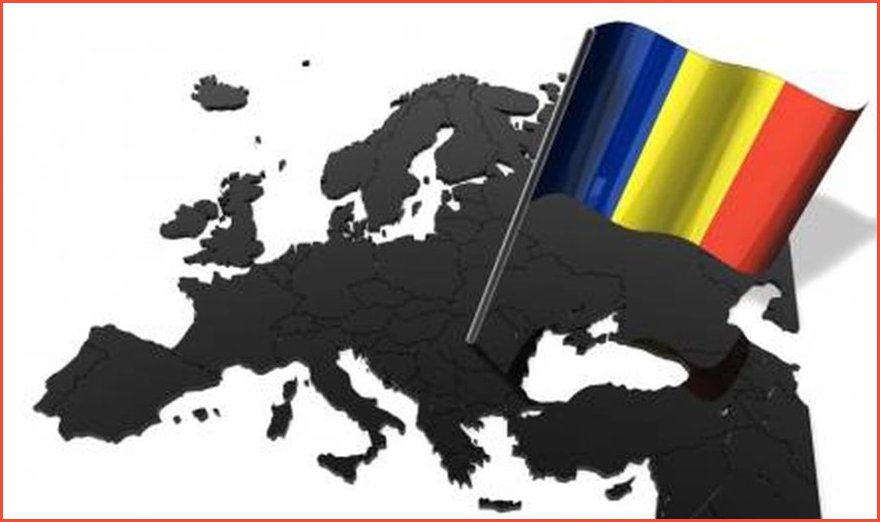 Equity investments (including estimated net profits reinvested) amounted to a net value of EUR 2.340 billion, and intra-group loans recorded a net value of EUR 92 million.
Equity investments (including estimated net profits reinvested) amounted to a net value of EUR 2.340 billion, and intra-group loans recorded a net value of EUR 92 million.
Trade register data shows that the number of newly established foreign limited liability companies in Romania increased by 45% in the first five months of 2021 compared to the same period in 2020 to 2,100 units.
The 2,100 new companies had issued share capital totaling $21.595 million, nearly nine times that of the companies registered in January-May 2020 of $2.43 million, according to the National Office of the Registry Trade (ONRC). ).
At the end of May 2021, there were 233,076 companies with a foreign participation in the share capital in Romania. The value of the subscribed capital was $64.035 billion.
The largest number of companies with foreign participation was with investors from Italy, respectively 49,978 (issued capital of 3,896 billion dollars), but the highest value of share capital belongs to Dutch companies, respectively 12,564 billion dollars, in 5,578 companies.
Product prices, volume and purchasing power in EU and Romania
Romania has the lowest prices in the European Union for consumer products
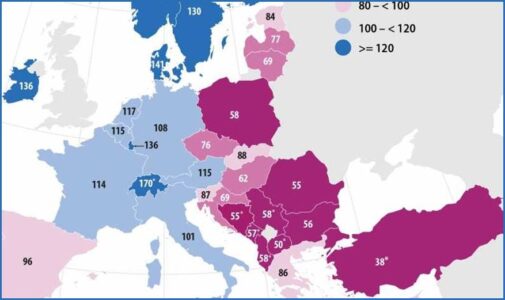 Romania has the lowest prices in the European Union for consumer services and products, according to the latest available data for 2020, published on Tuesday by the European Statistical Office Eurostat. According to European statistics, the general price level in Romania is 55% of the average of the European Union. In other words, our prices are 45% below the EU average. Bulgaria has slightly higher prices (56% of the EU average) and Poland even higher (58%).
Romania has the lowest prices in the European Union for consumer services and products, according to the latest available data for 2020, published on Tuesday by the European Statistical Office Eurostat. According to European statistics, the general price level in Romania is 55% of the average of the European Union. In other words, our prices are 45% below the EU average. Bulgaria has slightly higher prices (56% of the EU average) and Poland even higher (58%).
Romanians have more purchasing power than Greeks, Hungarians and Bulgarians, according to the latest estimates of actual individual consumption, recently published by Eurostat.
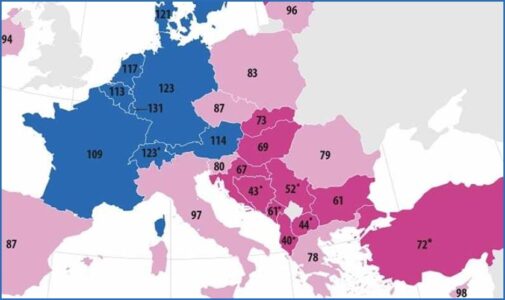 According to the quoted source, Romania had an effective annual consumption per capita at purchasing power parity (PPS) in 2020 of 79% of the EU average. In other words, Romanians have an average purchasing power of 21% below the European Union average.
According to the quoted source, Romania had an effective annual consumption per capita at purchasing power parity (PPS) in 2020 of 79% of the EU average. In other words, Romanians have an average purchasing power of 21% below the European Union average.
In the EU ranking of the annual consumption of PPS per capita, Romania (79%) is equal to Estonia and more than 6 countries: Bulgaria (61), Croatia (67), Hungary (69), Latvia (72) , Slovakia (73) and Greece (78).
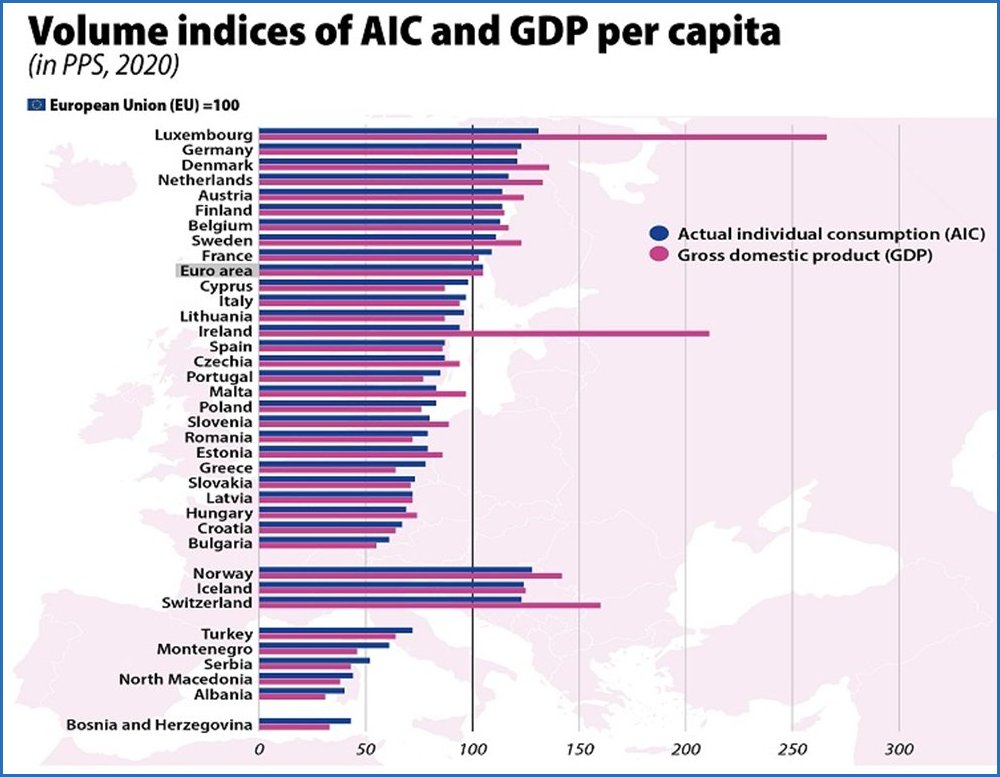
Luxembourg residents have the highest purchasing power, expressed by this indicator of actual individual consumption – 131% of the EU average or, in other words, 31% above the EU average. Germany (123) and Denmark (121) follow in the top.
Actual individual consumption (AIC) refers to goods and services actually consumed by households. It includes consumer goods and services purchased directly by households, as well as services provided by non-profit and government agencies for individual consumption (for example, health and education services).
Geo-Political Developments
Velvet Revolution in Republic of Moldova(Moldova)
After the pro-European Party for Action and Solidarity, PAS, won the parliamentary elections in Moldova by a large margin, President Sandu has an opportunity to work with the legislature to pursue a reformist agenda.
Pro-European parties won a convincing victory in Moldova’s elections on Sunday after 99.60 percent of the votes cast had been counted.
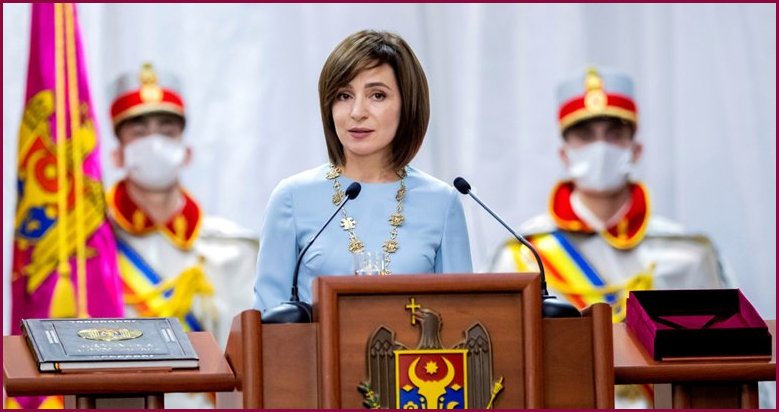
According to these results, the pro-European Action and Solidarity Party, PAS, until recently led by its founder President Maia Sandu, came first with 52.60 percent of the vote and 63 seats out of 101 seats, a comfortable majority.
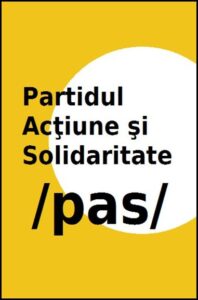 The pro-Russian bloc of communists and socialists, BeCS, lagged far behind with 27.32 percent of the vote, with 32 seats, and the Ilan Shor party won 5.77 percent and six seats.
The pro-Russian bloc of communists and socialists, BeCS, lagged far behind with 27.32 percent of the vote, with 32 seats, and the Ilan Shor party won 5.77 percent and six seats.
Just over 1,477,574 Moldovan citizens voted out of 3.28 million people registered in the registry on Sunday. The participation rate was 48.41 percent, with a significant diaspora participation of 212,145 Moldovans living abroad, mainly in Western Europe. More than 86 percent of the votes cast in the diaspora went to PAS.
The main outcome of the election is that President Sandu now has the opportunity to carry out her reformist agenda alongside a parliamentary majority and a future government. The first target is the reform of the judiciary and the fight against an endemic corrupt system in Moldova.
Merkel sees strategic arguments for the accession of Balkan states to the EU
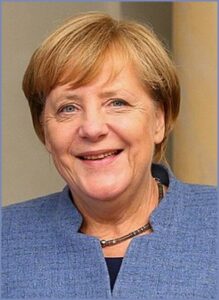 Chancellor Angela Merkel recently said she sees the six Western Balkan countries as future members for strategic reasons
Chancellor Angela Merkel recently said she sees the six Western Balkan countries as future members for strategic reasons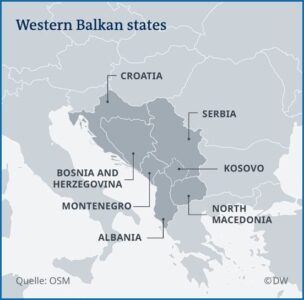 “It is in the European Union’s own interest to move the process forward here,” Merkel told reporters after a virtual conference on the Western Balkans, alluding to the influence of Russia and China in the region, but without naming them. She said that stronger regional cooperation promoted since 2014 had already met initial successes, such as a roaming agreement that had just come into force. The conference was attended by the heads of government of Serbia, Albania , North Macedonia, Bosnia and Herzegovina, Montenegro and Kosovo, as well as by the President of the European Commission, Ursula von der Leyen.Von der Leyen said: “Our first priority is to accelerate the enlargement agenda across the region and strengthen our partners in support the Western Balkans in their work to implement the necessary reforms to make progress on their European path.” In the videoconference, French President Emm Anuel Macron “expressed very clearly” his support for the prospect of the six states joining the EU, Merkel stressed.
“It is in the European Union’s own interest to move the process forward here,” Merkel told reporters after a virtual conference on the Western Balkans, alluding to the influence of Russia and China in the region, but without naming them. She said that stronger regional cooperation promoted since 2014 had already met initial successes, such as a roaming agreement that had just come into force. The conference was attended by the heads of government of Serbia, Albania , North Macedonia, Bosnia and Herzegovina, Montenegro and Kosovo, as well as by the President of the European Commission, Ursula von der Leyen.Von der Leyen said: “Our first priority is to accelerate the enlargement agenda across the region and strengthen our partners in support the Western Balkans in their work to implement the necessary reforms to make progress on their European path.” In the videoconference, French President Emm Anuel Macron “expressed very clearly” his support for the prospect of the six states joining the EU, Merkel stressed.
Corruption watchdog (Greco): Dutch government lax in tightening integrity rules
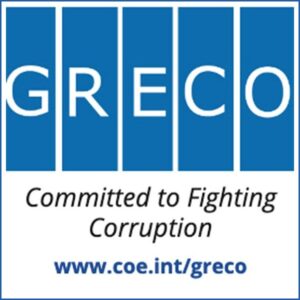 The Netherlands is still doing too little to promote integrity and combat corruption among top officials and politicians. This is the conclusion of Greco, the corruption watchdog of the Council of Europe, in the report published on Tuesday 6 July. The Council of Europe is not part of the European Union, but was established after the Second World War by European countries to promote democracy, the rule of law and human rights. The organization has great moral authority, but cannot impose sanctions. In GRECO, 48 European countries and the United States work together.
The Netherlands is still doing too little to promote integrity and combat corruption among top officials and politicians. This is the conclusion of Greco, the corruption watchdog of the Council of Europe, in the report published on Tuesday 6 July. The Council of Europe is not part of the European Union, but was established after the Second World War by European countries to promote democracy, the rule of law and human rights. The organization has great moral authority, but cannot impose sanctions. In GRECO, 48 European countries and the United States work together.
For example, there are no clear rules on how to deal with lobbyists, there is no detailed code of conduct for how to act in the event of conflicts of interest, no active efforts are made to raise awareness of integrity issues, the division between business and private interests is not always there are no clear rules for the transfer of top officials and politicians to the private sector.
Greco already established all this two and a half years ago, after which the government was asked to take measures within eighteen months. Those measures are not forthcoming, according to the new evaluation. “We regret that no tangible progress has been made on any of our recommendations,” said Greco.
‘ Instruction manual’
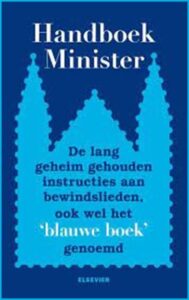 Greco finds the ‘Blue Book’, the manual for ministers to be inadequate as a guideline for behaviour. Greco also wants senior government officials to make their interests and assets public on a regular basis, as has been the case in Romania for decades.
Greco finds the ‘Blue Book’, the manual for ministers to be inadequate as a guideline for behaviour. Greco also wants senior government officials to make their interests and assets public on a regular basis, as has been the case in Romania for decades.
The Netherlands is often reprimanded when it comes to the integrity of government and politics. In May, the OECD (Organization for Economic Cooperation and Development) noted that the Netherlands is lagging behind in regulations regarding the government’s dealings with lobbyists.
Earlier research by the Open State Foundation showed that government officials are sloppy with their public agenda, so that contacts with lobbyists can remain shady. A ban on former ministers from maintaining (lobby) contact with their former ministry was recently declared inoperative for reasons that have not yet been clarified.
Law enforcement
Greco is not dissatisfied with the Netherlands in all areas. Part of the investigation focused on the police and military police. Improvements have been made there in recent years in the areas of regulation, training and awareness-raising. The frugal conclusion for those professional groups: ‘Some progress has been made.’
Schengen: Romania and Bulgaria gain access to the Visa Information System
In the run-up to joining the Schengen zone, Romania and Bulgaria will be able to access the Visa Information System from July this year, but only for reading, according to a European Commission decision, after both countries successfully complete a series of technical tests required are for connection to the system. Full access will be possible once the two countries are fully integrated into the Schengen area.
The Visa Information System is the database that connects border guards at the EU’s external borders with Member States’ consulates around the world. Read-only access means that these Member States can access information already in the system, but cannot enter new information, the EU executive explains in a press release.
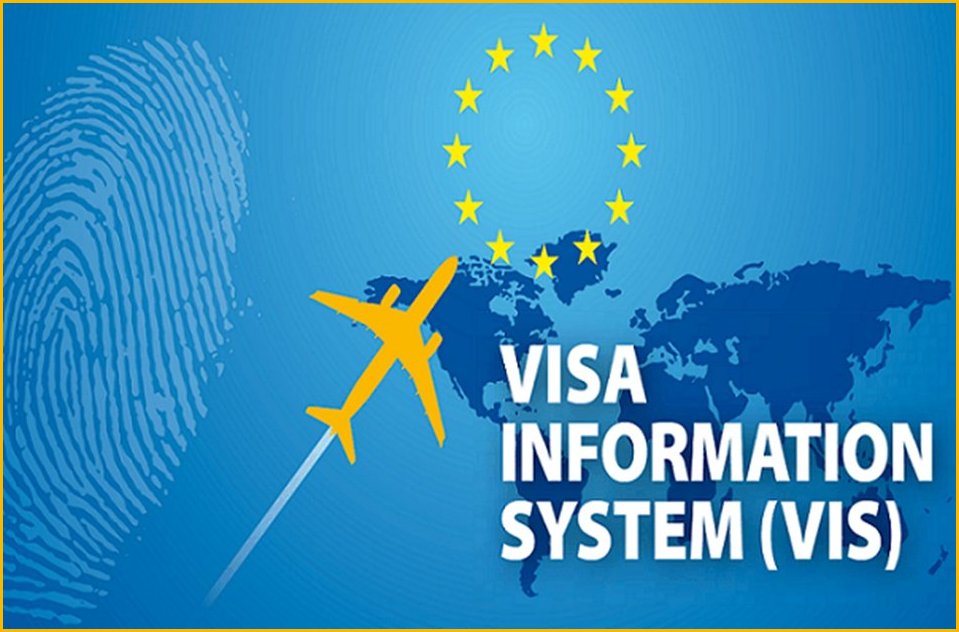
Access to the Visa Information System means that Romania and Bulgaria can see an applicant’s visa history, making it easier for them to process visa applications. It also allows Bulgarian and Romanian border guards to check the validity and authenticity of Schengen visas issued by other Member States against data stored in the Visa Information System, helping to prevent fraud and fight serious crime and terrorism, improving security in the EU .
The Commission reiterated its call on the Council to take the necessary measures for Romania and Bulgaria to become part of the area without internal border controls in the context of the strategy for a stronger and more resilient Schengen area, presented in June this year .
Public health sector
Updates Covid-19 Coronavirus
In the overview below recent overviews of the Romanian situation in figures. An explanation is superfluous; the numbers speak for themselves.
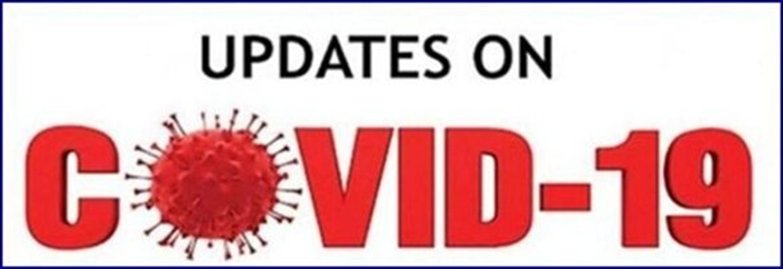
Netherlands colors RED and that will impose restrictions in many areas at home and abroad. Fully vaccinated people go free, although some countries also require a test.
Entry restrictions will apply to travel to Romania as of July 18, 2021. From 18 July 2021 00:00 a quarantine obligation of 14 days applies if you travel from the Netherlands to Romania.
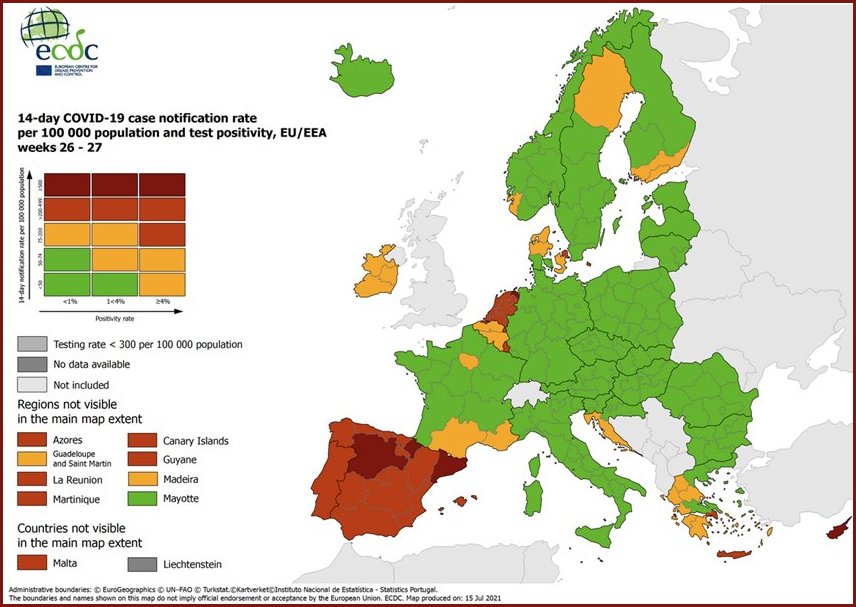
For the situations in which travelers from the Netherlands can enter the country without an obligation to quarantine, you can find it at:
Dutch: https://www.nederlandwereldwijd.nl/…/reizen/reisadvies
Romanian : https://stirioficiale.ro/…/hotararea-nr-43-din-01-07…
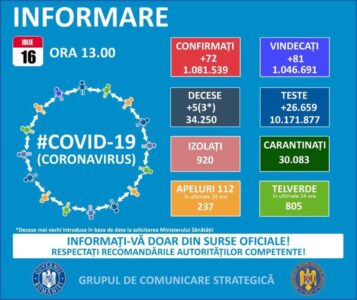
The ministry warns travelers that countries may still have additional entry restrictions, even if the Netherlands gives positive travel advice for that country. So consult the relevant pages in good time before departure!!
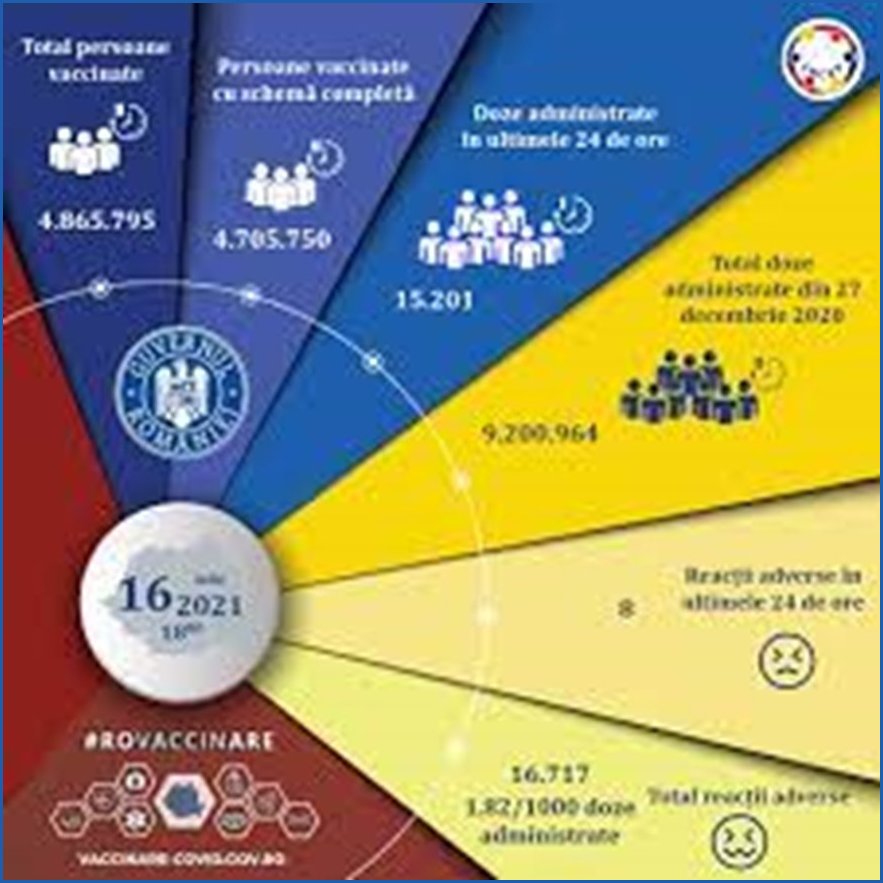
From April 1, 2021, the first authorized COVID-19 testing facility in Romania, located at Henri Coandă International Airport, Otopeni.
There is no test center at Cluj Napoca Airport; in the city are the following 4 test centers: Syblab, MedExpert, Medsan and Synevo
COVID triage form required upon entry into Romania
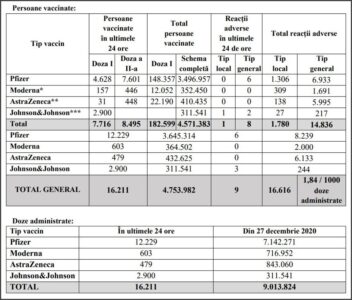 Upon entry into Romania, all individuals must complete a COVID triage form, which must then be handed in to a DSP (Romanian Public Health Authority) representative at the airport or at the border, the authorities announced. See the DECLARATION to be completed below. The first step is to fill in the phone number, after which you will receive an SMS with a unique validation code to complete the form. The information to be filled in on the triage form required to enter Romania is: name, surname, CNP, date of birth, country of origin of the person. The triage form is in fact a statement by which the person in question finds out whether he should remain in solitary confinement or in quarantine, in which case he must indicate the address where he will be staying during this period Those who have been vaccinated against Covid-19 are not allowed to be quarantined if they come to Romania from yellow or red areas, but – unlike the yellow list – those coming from red countries are not exempted from quarantine if they show a negative PCR test. Those who come from the green zone no longer need documents.
Upon entry into Romania, all individuals must complete a COVID triage form, which must then be handed in to a DSP (Romanian Public Health Authority) representative at the airport or at the border, the authorities announced. See the DECLARATION to be completed below. The first step is to fill in the phone number, after which you will receive an SMS with a unique validation code to complete the form. The information to be filled in on the triage form required to enter Romania is: name, surname, CNP, date of birth, country of origin of the person. The triage form is in fact a statement by which the person in question finds out whether he should remain in solitary confinement or in quarantine, in which case he must indicate the address where he will be staying during this period Those who have been vaccinated against Covid-19 are not allowed to be quarantined if they come to Romania from yellow or red areas, but – unlike the yellow list – those coming from red countries are not exempted from quarantine if they show a negative PCR test. Those who come from the green zone no longer need documents.
Pfizer/BioNTech will seek approval for third dose of COVID vaccine
The Pfizer/BioNTech alliance plans to apply for authorization “in the coming weeks” for a third dose of its vaccine against COVID-19, primarily in the United States and Europe, the companies said in a statement. US has already given approval)

This booster dose is intended to provide better immune protection to people who have already been vaccinated with the first two doses.
“Pfizer and BioNTech have found encouraging results in ongoing tests for a third dose of the current vaccine,” the companies said, which “plan to pass this data on to the FDA, EMA and other regulators in the coming weeks.” the US and European Medicines Agencies.
“Preliminary data from the study show that a booster dose given 6 months after the second dose has a consistent tolerance profile, causing high levels of neutralizing antibodies” against the virus, including Beta in South Africa.
These levels are “five to ten times higher” than those after the first two doses.
The results of this study will be published in a scientific journal, according to Pfizer/BioNTech.
The two companies also pointed out that their vaccine gave good results in the laboratory against the Delta variant and that a third dose could therefore increase immunity against this variant. Tests are underway to “confirm this hypothesis,” the two companies said.
Disclaimer

The newsletter of the Dutch Romanian Network is compiled with great care. The Dutch Romanian Network cannot accept any liability for a possible inaccuracy and/or incompleteness of the information provided herein, nor can any rights be derived from the content of the newsletter. The articles do not necessarily reflect the opinion of the board.
